Green Lantern: War Journal will change the way you think about John Stewart
Interview | Phillip Kennedy Johnson is digging deep into the inner life of a Lantern

The emerald spotlight shines upon John Stewart once again in Green Lantern: War Journal, a new series spinning out of the Dawn of DC by Phillip Kennedy Johnson and artist Montos.
The book, which launches in September, finds John back on Earth, having put his life as a Green Lantern behind him - or so he believes. He's called back into action when the last Green Lantern from another universe arrives seeking his help. Meanwhile, a mysterious new threat called the Revenant Queen has arisen and has her sights set squarely on John.
In this exclusive interview with Newsarama, Kennedy Johnson discusses balancing the epic scope of a Green Lantern title with an in-depth exploration of John Stewart, how the Revenant Queen and the Radiant Dead fit into his narrative and how his collaboration with artist Montos has informed the book.
Speaking of Montos, we also have a first look at some of his gorgeous unlettered pages from the forthcoming first issue.
But first, check out this gallery of covers...
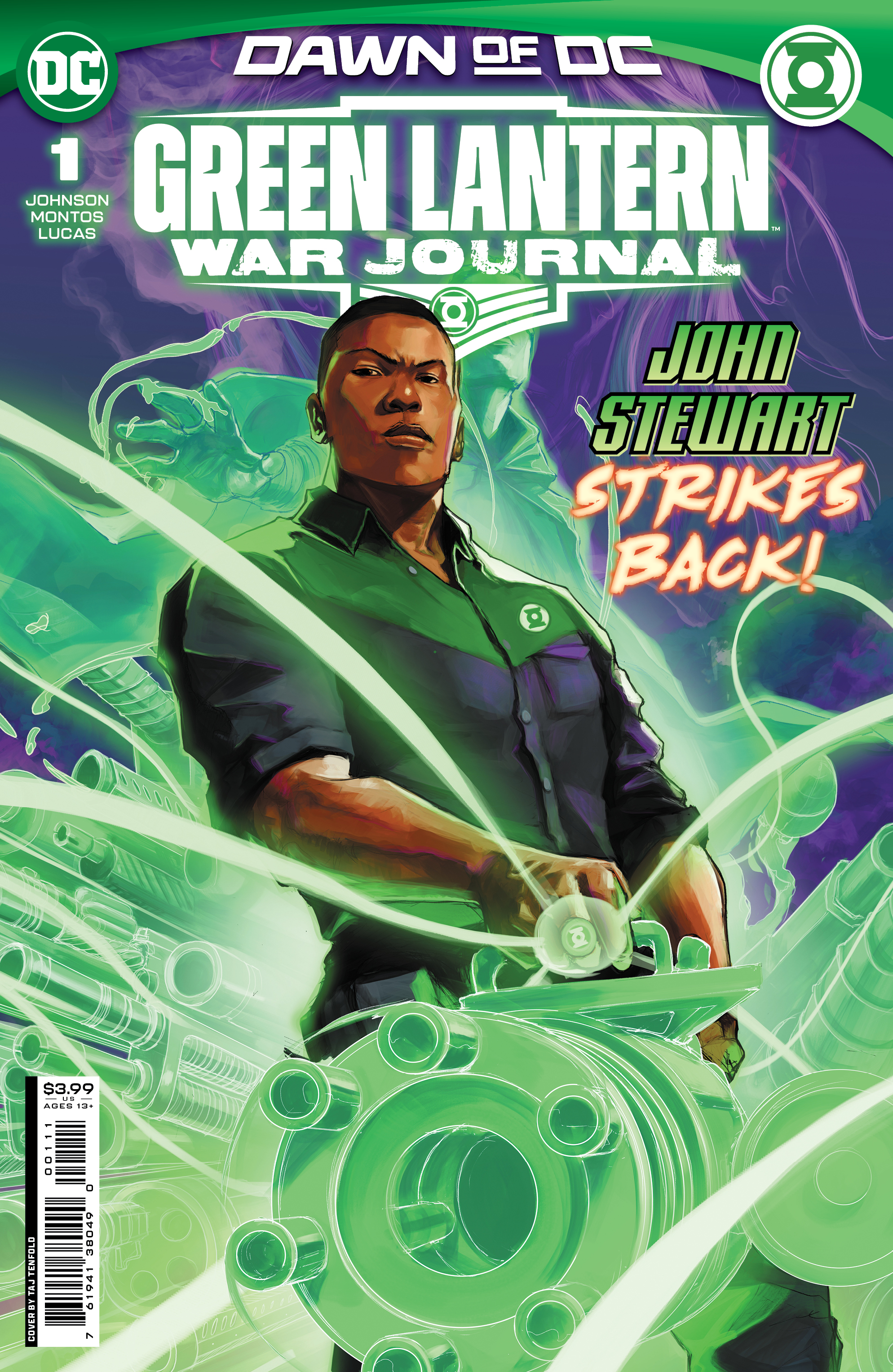
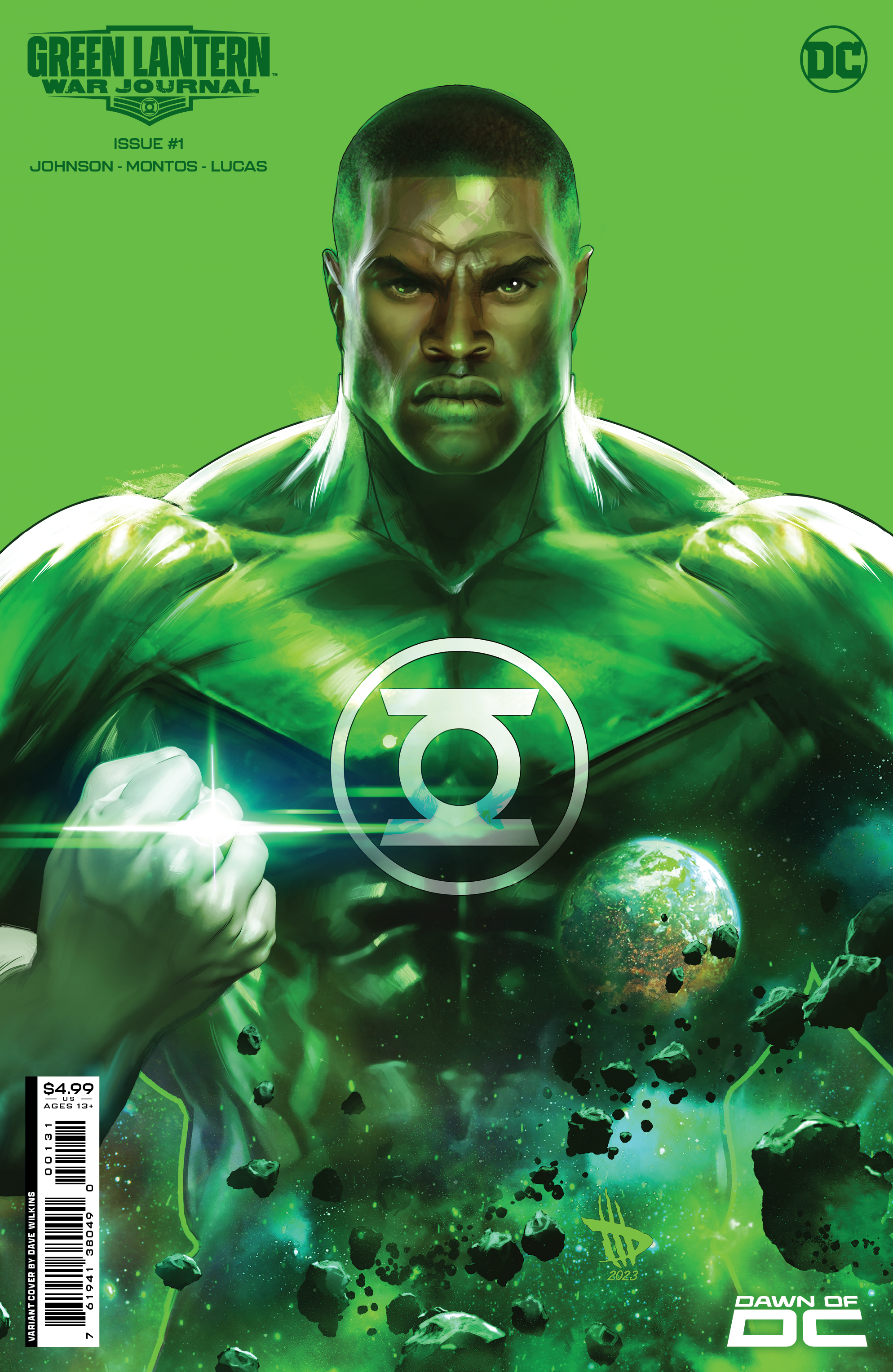
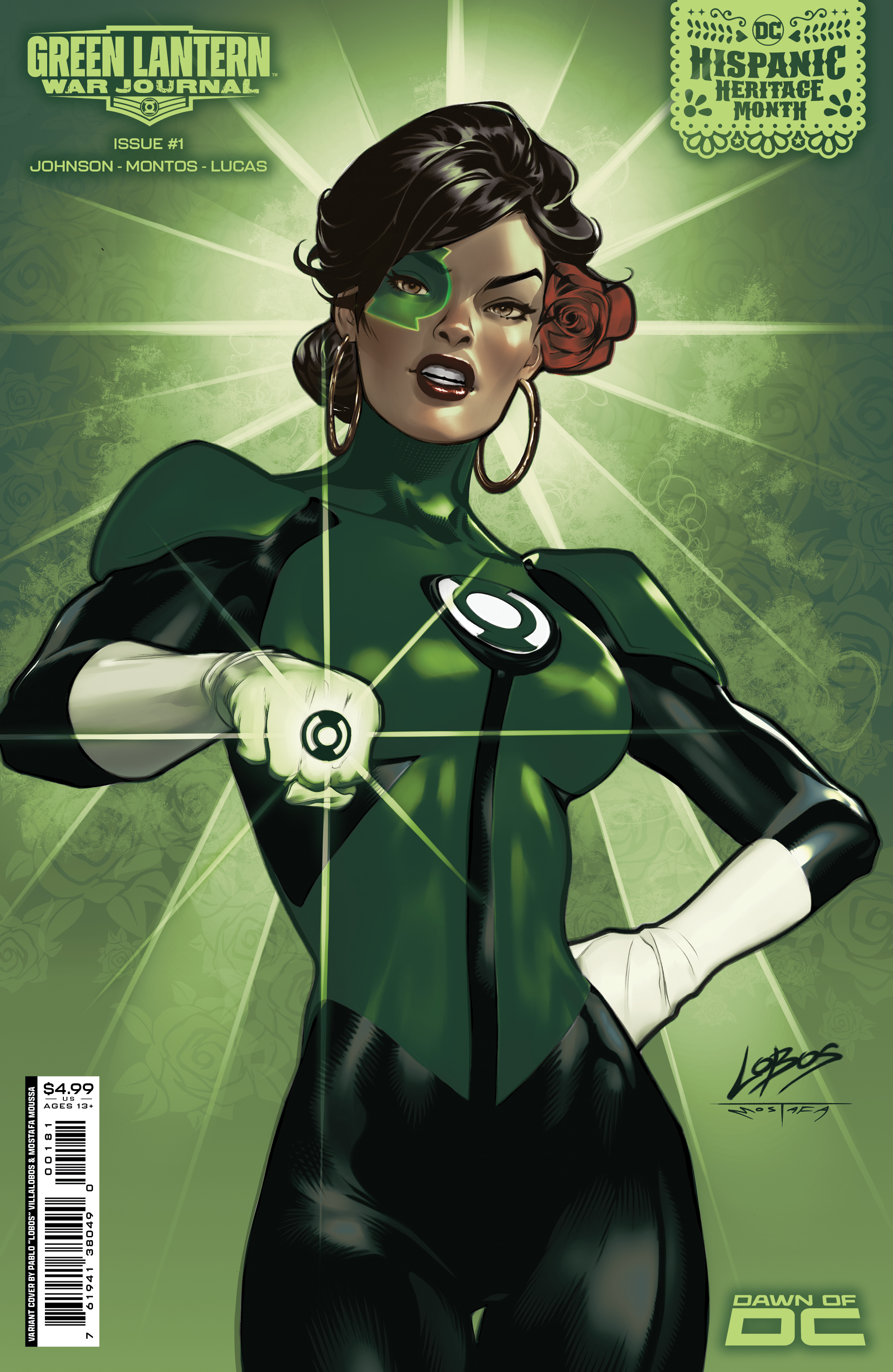
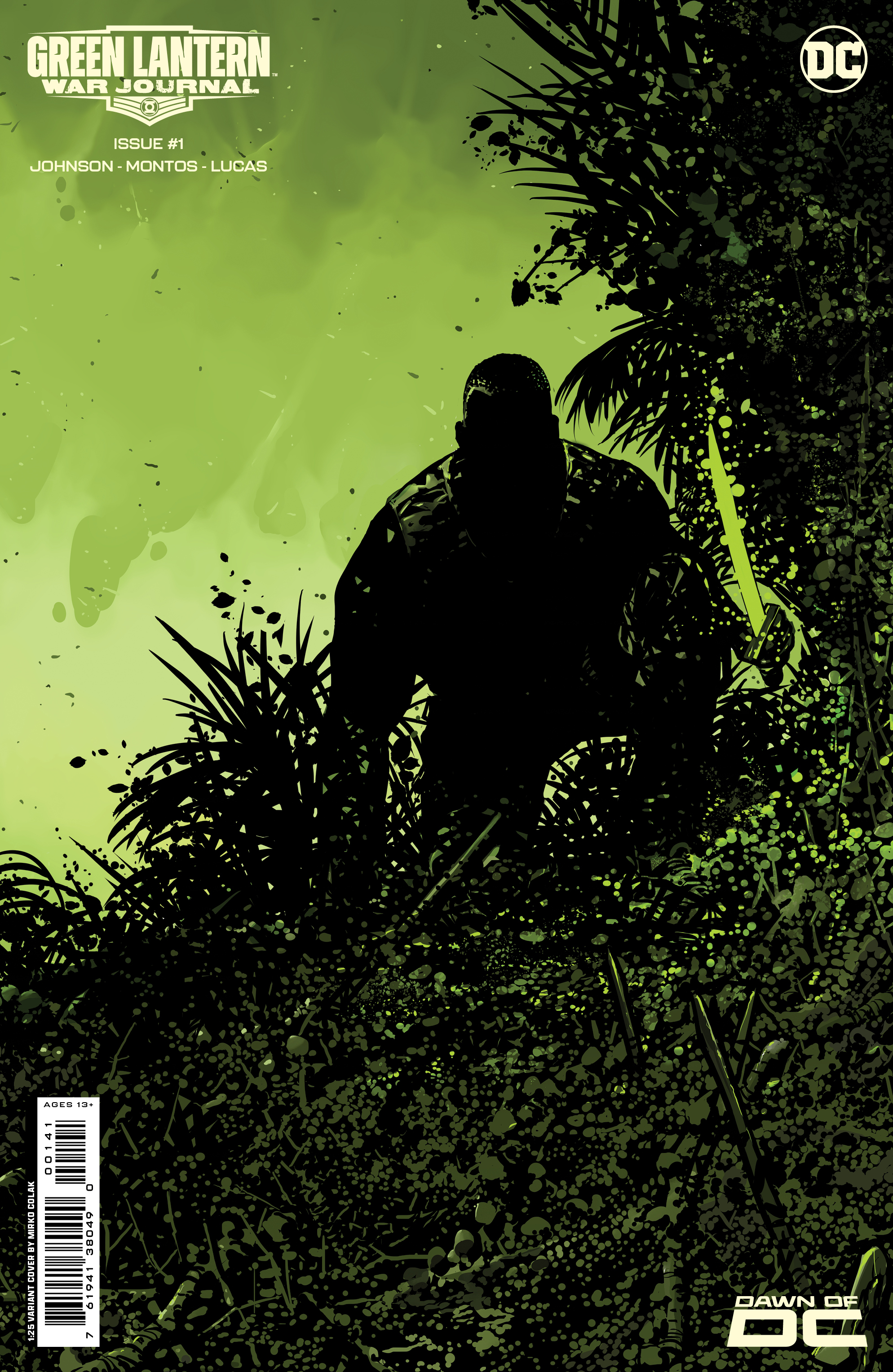
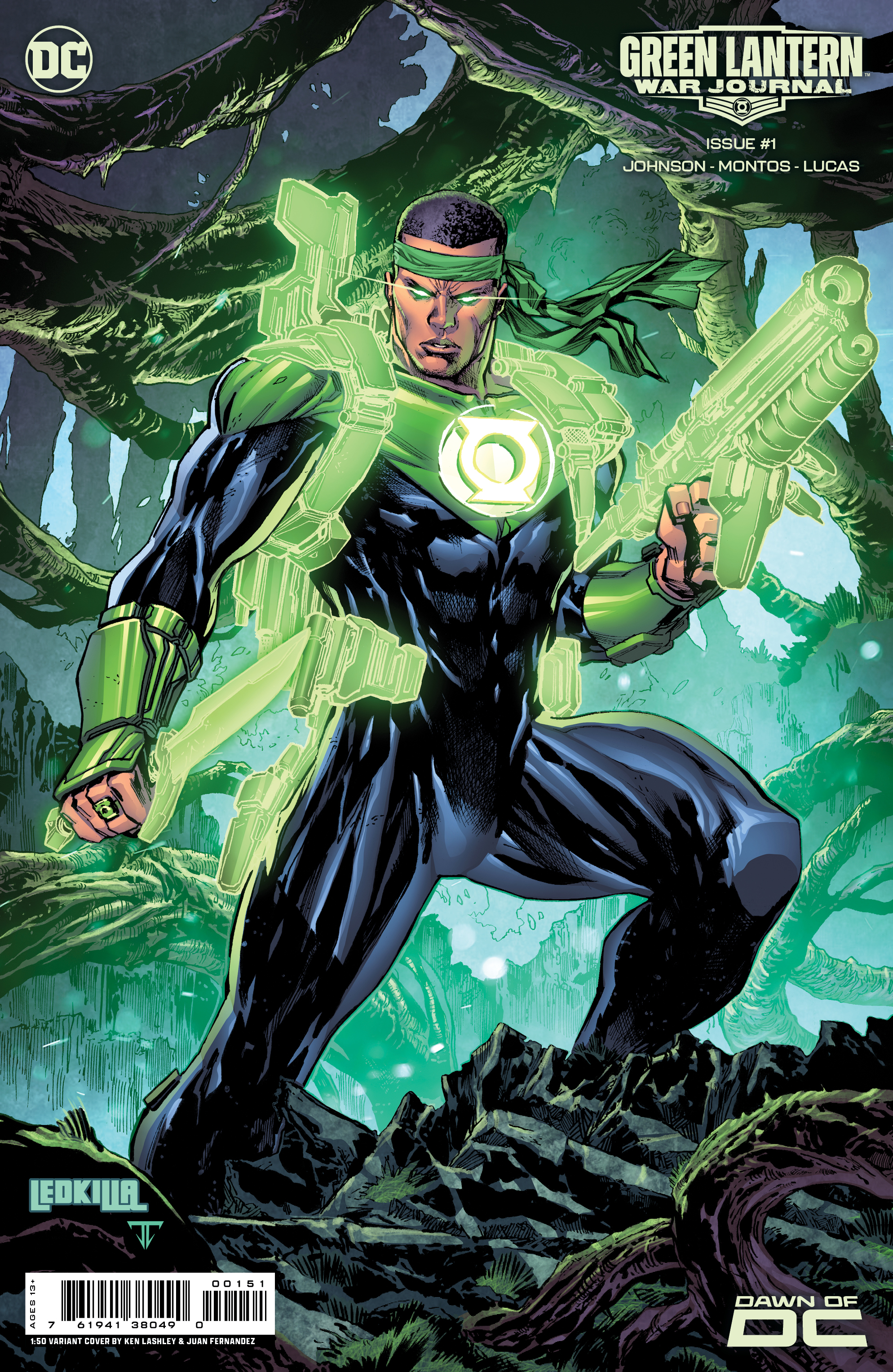

Newsarama: Congratulations on Green Lantern: War Journal! What about that title do you think speaks to John Stewart and the story that you're telling?
Phillip Kennedy Johnson: I confess the title was not my choice, but I like it. That was pitched to me, and I'm totally fine with it. Honestly, I think the title is more about the reader's expectations for the character of John Stewart because of how he's been developed in a lot of previous stories. I think people associate him with his history of military service. So if Hal is the test pilot and Kyle is the artist, John is the ex-Marine. I think that's how people tend to think of him.
Get the best comic news, insights, opinions, analysis and more!
Newsarama: He's also referred to as the Guardian and the Builder. I think that we sometimes think about the military as a destructive force, but because of his architecture background he's taking things apart and rebuilding them better than before.
Yeah. The title fulfills expectations for what people expect to see from John Stewart, but it belies the complexity that he has as a character. It is a War Journal, it's about this massive conflict that's coming, but John is so much more than that.
Sometimes he's called the Guardian and the Builder. To me, that's a much more complete view of what John is. We're also going to see what it means to struggle with some stuff as an ex-Marine. We're going to see his architect background and his relationship with his mother, with his sisters, and see what's happened to them.
There's just a lot more to him. Whenever anyone sees John in any other book going forward, I want them to remember this story and I want it to color their impressions of him so he's not just a warrior, he's also the guardian, the builder, the family man - the many aspects of who he is.

Green Lantern is often a very cosmic, space-faring epic. In this first issue you measure that sense of scope with John's personal struggles. How do you strike that balance?
The mission of this book was to further develop the character, but also to further develop the Green Lantern lore. To me, the DC mythology is so vast and beautiful and interesting and sometimes there are different aspects of it because it's been around so long. Sometimes there are inconsistencies and changes and retcons and things that are just unavoidable in any kind of shared universe. I think that makes it all the more interesting. To me, that's like reading real life histories and how different accounts of things conflict.
I see the Green Lantern corner of the DC Universe, especially, as the Wild West where there's just so much uncharted history that we don't know about. Stories of heroes that we don't know about going back thousands and even millions of years, and I just wanted to see more of that stuff.
Whenever I'm writing any story I approach it like an ice sculpture. You can't use a scalpel the whole way. It'll take forever and you'll lose sight of the big picture. When you're writing a multi-issue arc, especially in a shared universe like this, it needs to be chainsaw first. I outline a lot and I just think about how many issues I have to tell this story. I think about what the big beats of this issue are, and then this issue, and then this issue, and how does it a play into three act structure...
So in every issue as I'm in my chainsaw stage of scripting, I have the big visual elements to give Montos awesome stuff to do. He's an incredible gift to us and I want to make sure he's really getting a chance to flex his muscles, to show the horror stuff that we're seeing from the Revenant Queen and the Radiant Dead, and all the awesome elements of John's constructs.

You perfectly segued into my next question about the Revenant Queen and the Radiant Dead. What are you hoping that this villain will evoke for readers?
The interesting thing about the Revenant Queen in the story is that John doesn't know who she is. She just comes out of nowhere, from John's perspective. He doesn't know about his alternate universe self where he's the Guardian and the Builder and the Paul Muad'Dib of that world. To him it comes out of nowhere, and that is sort of a parallel for the way he's dealing with his military service.
In the first issue, we see him trying to live a normal guy's life, having flashbacks of flying, soaring across the galaxy while he's sitting at a red light in his truck. He's just waiting for the light to change and just crawling out of his skin like, "Oh my God, everything is so slow and quiet here and nothing matters, and what am I even doing here?"
It's hard for people to come back to real life after living that way. So many people come back and struggle with driving safely, with talking in a normal tone of voice. When everything's ramped up to 11 for a long period of time, you're trying to get back to that, even if you don't want it to be that way. So we're seeing John trying to be normal, trying to live a normal guy's life, while these memories of saving the universe from cosmic horrors just keep intruding on his mind.

Like you said, it parallels many veterans' experiences of coming home - what do you do when it seems like your service is done, you don't matter now, but you did so much?
Right. To me, one of the great resources for the character of John Stewart is Geoffrey Thorne. He loves that character and just has such a clear vision for who he is. So I spoke to Geoffrey and he said something about John that really stuck out to me. We're so used to thinking about superheroes as these people who will do the hard thing and fight the hard fight until they are dead. And that's not how he sees John. He sees John as somebody who is doing his service, and someday his service will end and he'll go do something else. He never intended to wear the ring forever. It's just part of his life that he's lived, a chapter that will eventually end.
I thought that was really interesting, and I thought that was a cool, mature way of looking at that character, and that is how a lot of servicemen do it too. So I wanted to see that play out in the book. [It reminds me of] this one interaction that I had. I was driving to my Army job and I'm at a light. This guy pulls out in front of me super aggressively and just slams on his brakes. I didn't react, I didn't do anything. But he jumps out of his car and comes right up to my window and is screaming at me and I don't even know what's happening, but I could see that the guy was suffering.
That was an experience I will never forget. It was just so out of the blue and completely uncalled for and weird, but I like to believe that I know some of the stuff he went through and where his mind was trying to get back to, and I've never really had a chance to really express that in the story before.
We're not going to see John in any road rage scenes, but there was an underlying theme to that instance that really stuck with me and it just made me think a lot about service and about the price of it, about the price that these people pay that others sometimes don't understand.
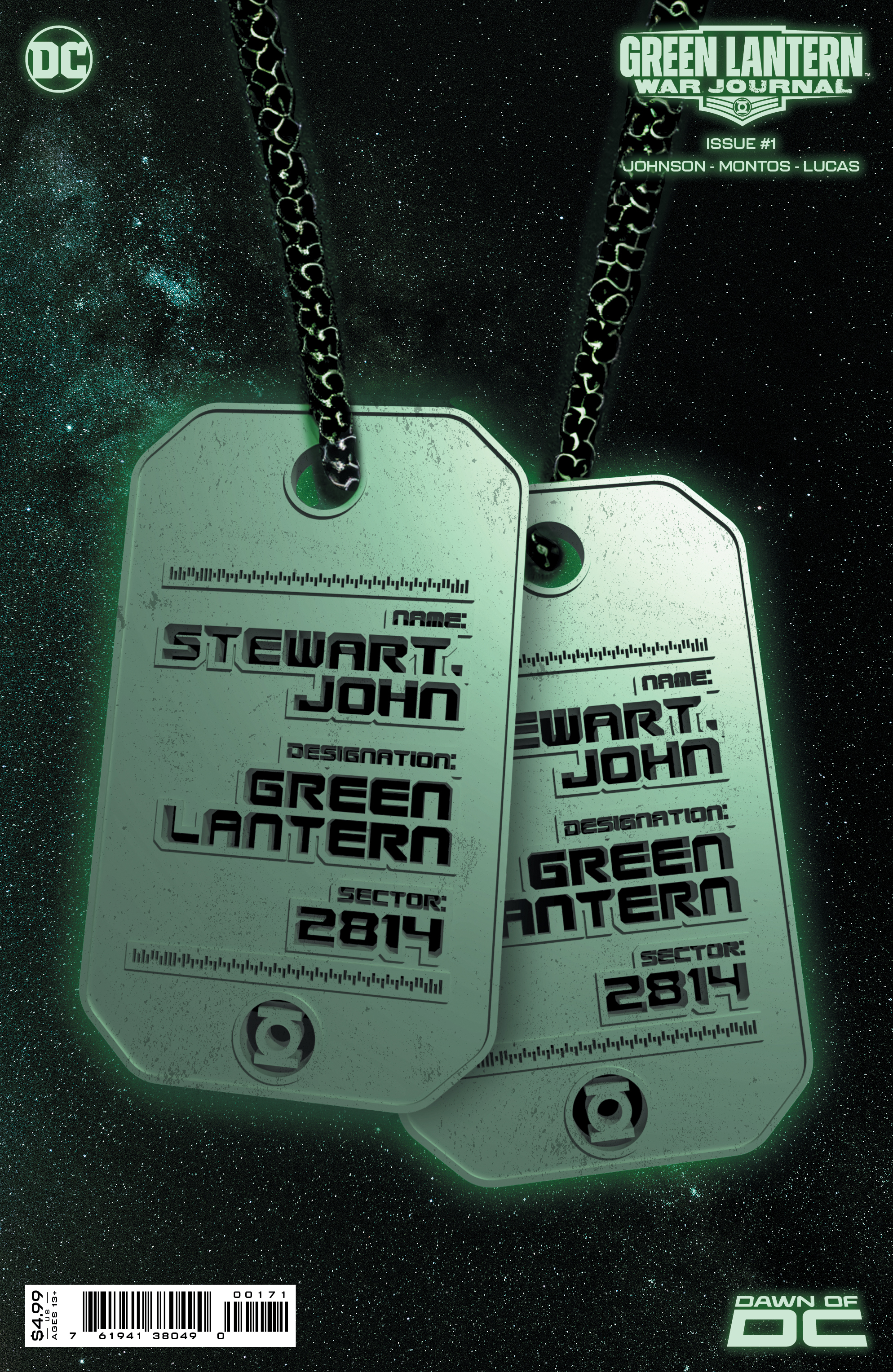
On some level, the horror of the mantle is that the job is never done. It's something that has been explored more in comics recently and it's very cool that you're going to be exploring some of these themes as well.
Thanks. You totally nailed it when you said that the work's never done. John is trying to put that chapter of his life behind him. Even when Geoffrey told me that John will someday leave that behind, I questioned it, and not because I disagreed that John would want to move on, I just felt like the world wouldn't be done with him.
John has always struck me as the consummate superhero. Of course he's a Green Lantern. He's not the dark horse pick like so many others, he's the obvious choice. And when John tries to hang it up and tries to actually do his due diligence at home and try to have his works of peace rather than of war, his works of war are going to keep coming back for him no matter what he tries to do.
Tell us a little about your creative process with your artists. Can you give us a little peek behind the scenes of how the two work together for this?
The more closely a creative team works together, the more unified and singular the work becomes. A lot of the best comics out there are by creative teams that just finish each other's sentences. And Montos is just so collaborative. Not only does he have incredible drawing chops, but he's also a great collaborator that wants to know what I think, that sends layouts and we give thoughts back and forth. I encourage him to give me notes too. I don't ever want an artist to feel like they work for me because my step in the process comes first. We should always be collaborating all the way through to the end.
So I always encourage Montos to change things in the script or to pitch me different ideas so we can talk all the way through. I just don't want to take a talent like Montos and waste it. So I interact with him as much as possible.

Was there a moment in your collaboration that really stands out to you?
There was a scene in which I had John throw an uppercut in a very dynamic pose, and this gigantic machine thing explodes out of the ground and slams into the guy. I wanted to see him use a construct and I described something that's not just a recreation of his arm.
What he sent was more like a much larger green recreation of John's own arm because the monolith thing wasn't reading, but that was the thing I specifically wanted to avoid. I wanted to see something more out of the box and crazy because I wanted everyone to see how unbelievably talented John is.
So we batted back and forth and I was like, 'What if it's a fist but we see the schematic, we see the different mechanical things coming together in real time to create a fist?' And Montos made this really dope looking mechanical arm.
Moments like that happen pretty often. I give a lot of detail with the caveat that he can change anything. He's the artist, he's the cinematographer. I trust his own visual instincts above and beyond my own by far. So if something doesn't work for a specific reason, we'll talk about it. But otherwise, I'm happy to let him take the reins on things like that.
Alright, I'm out of time. Here is my last question: is John Stewart the best Green Lantern and is this going to be the book that proves it?
They're all so great for their own reasons, for such different reasons. But I will say that John was always the "chosen one" in my view. He was always the one who was destined to have that gig. And even if he thinks he's done with it, it's not done with him.
Green Lantern: War Journal #1 is published by DC Comics on September 19.
John Stewart and Hal Jordan are just the beginning... So how many Green Lanterns are there?
Pierce Lydon has been a contributor to Newsarama for over 10 years, writing everything from reviews to deep dive explainers, to interview pieces and best lists.


